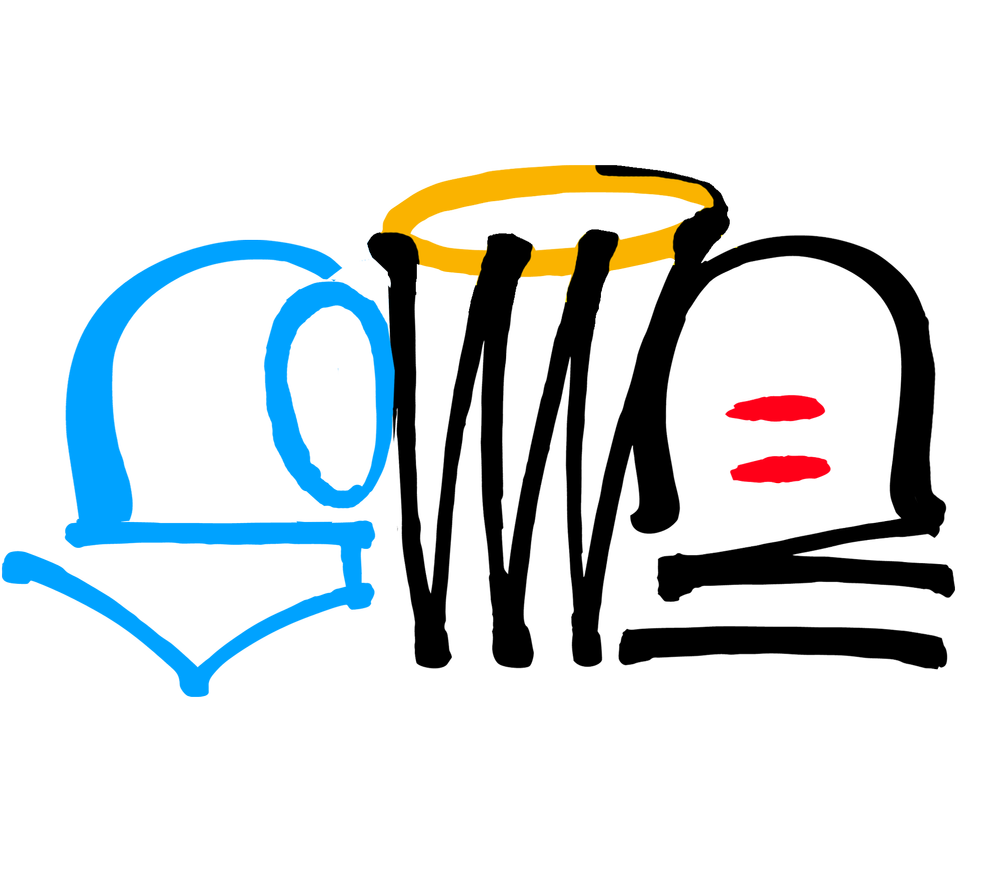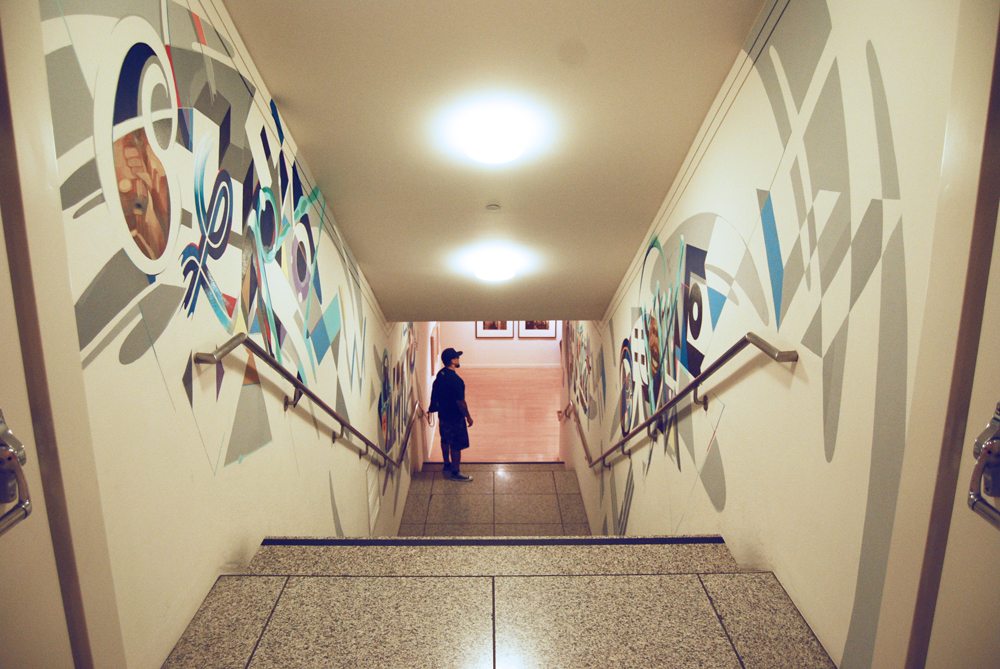Here is another set in my Phase Value series. Enjoy and stay posted for more!
San Jose Museum of Art Mural
This is a wall I painted for the San José Museum of Art a little over one year ago. It's almost going to be removed for the next show, and I never got a chance to post it up until now. The wall is a passage way from the main lobby to a downstairs gallery. The Museum approached me to do the mural with total free range on creativity as long as I touched on the concept of typography which was the topic of exhibited works for the approaching gallery. This is the result, and I wish I had better pics!
About Siqueiros
Collaborative painting with artist Poesia.
I recently came together with artist Poesia to create a homage to David Alfaro Siqueiros.
About the artist and his techniques
As a prominent painter and political activist, David Alfaro Siqueiros (1896 -1974) was an integral member of the Mexican School of Painting along with Diego Rivera and José Clemente Orozco. He continues to be viewed as one of the most important Mexican artists of the 20th century although his artistic influence spread far beyond Mexico’s borders.
Siqueiros organized artists in both Mexico and abroad to promote the idea of creating collective works. At the beginning of the 20th century, under the protection of Mexico’s Secretary of Public Education, he created his first decorative mural. He advocated using art as a political tool and thought that mural art should be used as a public service for el pueblo (the community). As an active member of the Mexican Communist Party, Siqueiros fought as a colonel in the Mexican Revolution and again in the Spanish Civil War. He also fought for the rights of laborers and on several occasions his political activities put him in jail and even led to exile.
Siqueiros passionately declared his artistic and political views in public, arguing endlessly at conferences and in his writing. Although Siqueiros is represented in the historic canon of modern Mexican art as one of the leading proponents of public art for social action--largely due to his mural painting--it was through his easel painting that he studied an extensive variety of techniques and styles that allowed him to examine pictorial space, composition, light, shadow and color.
In addition to his exploration of techniques and styles, Siqueiros constantly experimented with new tools and materials. Of utmost importance is the technical aspect of the works of art included in this exhibition. After discovering various types of industrial materials produced in the United States in the 1930s, Siqueiros’ produced most of his easel works with uncommon materials which include Duco paint, a DuPont brand name for pyroxilin paint, a tough and resilient type of nitro-cellulose paint manufactured for the automotive industry. Also utilized was vinylite paint, a type of lacquer with a vinyl base used for easel paintings or as a primer for mural works. Rarely working on canvas, Siqueiros preferred to paint on various types of composite wood surfaces such as Masonite, because of its low cost, ease of preparation, durability and receptiveness to pyroxilin and acrylic paints. The use of these industrial materials
Source: Museum of Latin American Art
Limited Edition Print Release
NEW!
PRINT RELEASE
FRACTIONS
Limited edition fine art giclee print on 100% archival velvet fine art paper.
Edition of 50
Signed and numbered
13" x 13"
Unframed
Price: $40.00 + Shipping & Handling



















